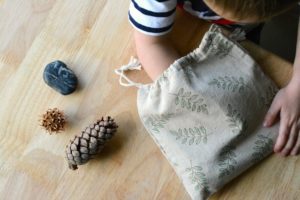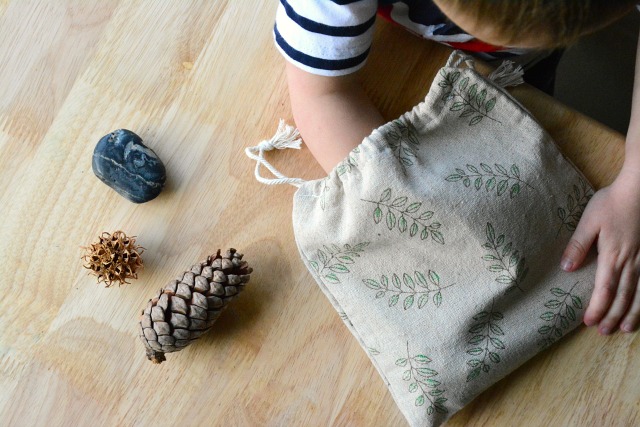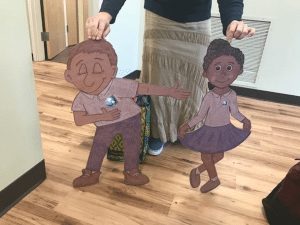Montessori Mystery Bag

The mystery bag, also called the stereognostic bag, was designed to help children develop their ability to visualize objects using only their sense of touch. This work is well-loved by little ones because it is both challenging and fun.
A Unique Sensorial Material
Maria Montessori’s curriculum was unique in that it included the sensorial materials—works specifically created to refine the learners’ senses—alongside the traditional math, language, and culture disciplines (as well as the similarly defining practical life lessons).
The sensorial curriculum is further broken down into several categories. Some materials are designed to refine the visual sense, like the pink tower or the color tablets, while others are designed to develop auditory discrimination, like the sound cylinders or the Montessori bells.
The sensorial curriculum also includes what Dr. Montessori referred to as the stereognostic sense. This sense lets us identify objects based on touch alone, namely, without being able to see them. Refining the stereognostic sense improves children’s ability to visualize, an important skill for many educational pursuits and real-life problem-solving.
How to Use the Mystery Bag
The mystery bag is fun for children and can usually be introduced somewhere between ages 2 and 3. Common household objects are used first, and those selected should feel very different from one another in size, form, and texture.
Before beginning, ensure that your learner can correctly name all of the objects. Have the child reach into the bag without looking and grab hold of an object inside (if she struggles with the idea of holding and feeling just one object, you can put only one at a time in the bag to start). Her task is to name the object without looking to see what it is. Then she can take it out and place it on the table. If she is not correct, simply touch the object and say, “this is a pencil” (or whatever it is). The child may also self-correct, in which case there is no need to repeat what she says.
After completing the mystery bag at its first level, the items can start to become more and more similar so that the child needs to further refine the stereognostic sense in order to distinguish between items that feel alike. To decide whether an object is a straw or a pencil, for example, many small details must be considered.
Geometric Solids in the Mystery Bag
The mystery bag is the perfect way to reinforce shape study. In Montessori, we teach about three-dimensional shapes with a set of wooden geometric solids that the kids can hold and feel. The mystery bag is a way to bring their attention even closer to the properties that define solid shapes.
Other Mystery Bag Extensions
The mystery bag can be used to reinforce many different topics, such as learning about plant parts or identifying letters of the alphabet! Toddlers learn with their senses, and primarily with their sense of touch. The stereognostic sense lets them zero in on touch instead of being distracted by visual cues.


